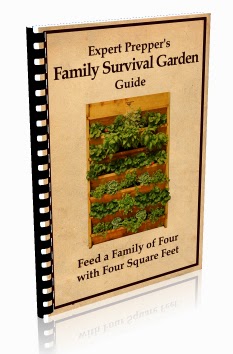All it takes is a little creative thinking.
Unfortunately, many gardeners focus only on the area under their feet. Given that most plants are grown in soil, this line of thinking makes sense. However, you can break free from this limited line of thinking once you decide to “look up.”
Did you realize that for every square foot of ground space in your garden, you actually have another 6 feet of valuable gardening space above it? It’s true! If you take advantage of all that untapped vertical space, you can grow so much more than you ever thought possible.
Save Space with Vertical Gardening
| Use an old ladder as a trellis. (Photo credit: Wikipedia) |
There are many ways you can provide vertical support for your plants. Some of the most common examples include trellises, tepees, arbors, hanging baskets, stacked containers, and fences. You can also take advantage of unused wall space along your house or garden shed by adding wood shelves, hanging planting pockets or repurposing old gutters into plant containers.
Often you can train your plants up existing structures on your property without needing to build or buy anything new. Split rail and chain link fencing are particularly effective for this purpose. For an inexpensive option that offers a lot of rustic charm, you can wire 3 long wooden poles or bamboo stalks together to form a tripod “tepee” that is ideal for growing pole beans or other vining vegetables.
If you want to add an artistic focal point to your garden, there is a huge selection of ready-made decorative vertical support structures available. For example, you can find decorative wrought iron trellises embellished with glass crystals or beautiful cedar hanging wall units you can add to an unused stretch of sunny wall space.
Ideal Plants for Vertical Gardening
There are a lot of fruits, vegetables and culinary herbs you can grow in your newfound vertical gardening space. In addition to pole beans, you can also grow other vining vegetables such as cucumbers, melons, pumpkins, squash and gourds. Smaller, more compact plants like herbs and edible flowers do well in smaller spaces like hanging baskets or wall-mounted units. By “suckering” or removing side stems from tomato plants, you can train them to grow in a more upright fashion. In addition to saving space, this process can also help your tomato plants stay healthy and become more productive.
 |
| My cucumbers climbing a rope trellis. |
In fact, many gardeners find that vertical gardening leads to healthier plants in general. There are a number of reasons for this. For starters, plants grown vertically have a lot less direct contact with soil, which translates to fewer problems caused by soil-dwelling pests and diseases. If garden pests do attack your plants, the problem will be easier to see and treat if the plant is elevated off the ground.
In addition, vertically grown plants have better exposure to light and air than those allowed to grow freely along the ground. This, in turn, leads to better ventilation and food absorption. The end result is a healthier plant that is more resistant to disease and better able to produce at peak capacity.
For some more really cool ideas on vertical and small-space organic gardening, be sure to check out this resource too!

No comments:
Post a Comment